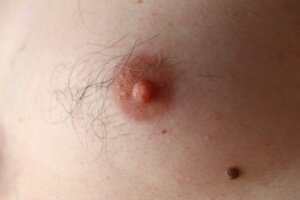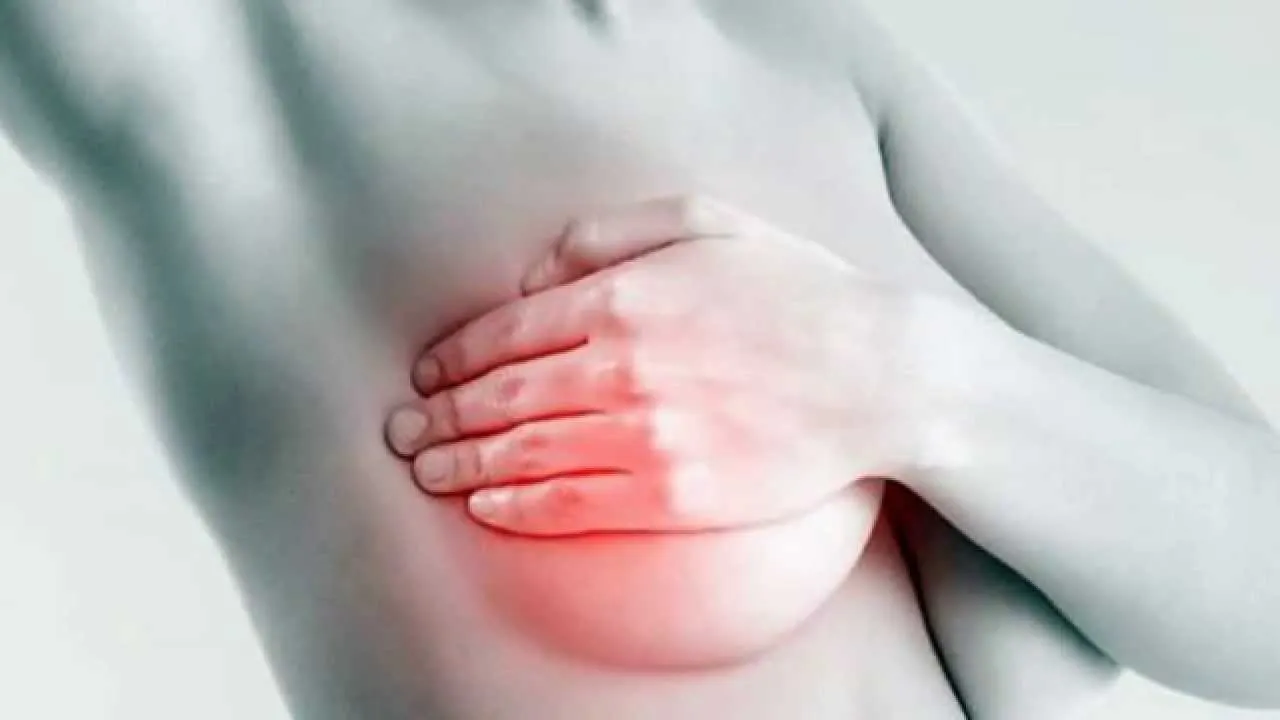14 Curiosities About Male and Female Nipples


Reviewed and approved by the doctor Leonardo Biolatto
Male and female nipples are an area of the body that isn’t really talked about much. Despite this, there’s a lot to say about them, starting with the fact that they’re almost as particular and individual as a fingerprint.
In the first place, it’s unusual there are male nipples as well as female. In women, they fulfill the evolutionary role of facilitating lactation. What’s striking is that they aren’t so different from those of men.
Female and male nipples vary greatly in size, shape and volume from one person to another.
One of the curious facts about male and female nipples is that they form first before the sexual organs. Also, they can become erect, either by erotic stimuli or by the action of cold.
1. There are between 4 and 8 types of female and male nipples
In general terms, female and male nipples can be flat, protruding, inverted or unclassified. The latter correspond to those that are divided or multiple.
Likewise, a person may have one nipple of one type and the other of a different type. There are at least 8 basic nipple configurations.
2. It’s normal to have inverted nipples
Most nipples are protracted, that is, they stick out. Inverted nipples do the opposite: they stay in.
However, the latter is still normal, as is one nipple being inverted and the other not, or them changing over time.

3. Nipples can change size
A woman’s nipples can change during pregnancy. A 2013 study conducted with a group of pregnant women found that the nipples grew, as well as the areola, during the course of gestation.
4. A nipple is different from the areola
It’s common when talking about male and female nipples to refer to the area that comprises both the nipple and the areola. The areola is the darker-colored area surrounding the nipple. The nipple as such, on the other hand, is the area in the center of the breast that’s connected to the mammary glands.
5. Yes, the nipple can have hair
There are hair follicles around the nipples. This means that both male and female nipples can have hair.
There’s nothing abnormal about this, even if these hairs are a little darker and stringy than on the rest of the body. They can be removed if they displease you or cause any discomfort.
6. There are double nipples
One of the most amazing curiosities about female and male nipples is that there isn’t always only one in each breast. Some people have two in each areola and both can produce milk for babies. This is known as a double and bifurcated nipple.
7. There are also multiple nipples
It may sound strange, but 1 in 18 people can have multiple nipples. These are called supernumerary nipples.
This applies to both male and female nipples. There is a reported case of a man with 7 nipples. There is also the case of a woman who had a nipple on her foot and another who had a nipple on her thigh. The latter, despite its location, produced milk after giving birth.
8. There are people without nipples
Just as there are people who have more than one nipple on each areola, and even many more on different parts of the body, there are also those who have no nipples. This is a very rare condition called athelia and can only be treated by breast correction surgery.
9. Lumps around the nipples are normal
It’s normal for there to be lumps around the nipples, and these are called Montgomery’s glands. These glands serve to keep the entire nipple and areola area comfortable and lubricated. Therefore, these lumps shouldn’t be a cause for concern.
10. Male nipples also produce milk
Although it’s a very rare occurrence, there are also cases of men producing milk through the nipples. This condition is called galactorrhea and only a few cases have been reported throughout history. However, there aren’t enough studies, so it isn’t known how common it may be.
11. Nipples are involved in sexual stimulation
Female and male nipples are sensitive to sexual stimuli and increase arousal. This was verified in a study in which 82% of women and 52% of men confirmed this.
It can also be annoying or uncomfortable for some people, so it can’t be taken for granted that it’s always gratifying. Better to ask!
12. Nipple soreness is normal for women
Nipple soreness is a very common symptom in women. It’s often part of premenstrual syndrome or other hormonal changes.
It can also be the result of wearing a bra, an irritation, or an allergy. During breastfeeding, it isn’t uncommon for mothers to experience pain in this area. If the discomfort persists or is very severe, talk to your doctor.
13. Don’t overlook secretions
Any discharge from the female and male nipples should be reported to your healthcare provider. This is often an indicator of health problems. If the discharge is accompanied by blood, the right thing to do is to consult immediately.

14. It was fashionable to show nipples in public
For several centuries, between the 15th and 18th centuries to be more precise, it was fashionable to show nipples in public. Ladies’ dresses were designed to expose them. The trend was set by Agnes Sorel, mistress of King Charles VII, and was adopted by women of all social classes.
A very important little part
Male and female nipples are a very small part of the body, but, as we have seen, they’re involved in many important functions, such as lactation and sexual arousal.
Like any other part of the body, if a person feels that there’s something strange, notices very sudden changes, or feels discomfort that isn’t usual, the best thing to do is to discuss it with the doctor.
All cited sources were thoroughly reviewed by our team to ensure their quality, reliability, currency, and validity. The bibliography of this article was considered reliable and of academic or scientific accuracy.
- Bezanilla F, Armstrong CM. Kinetic properties and inactivation of the gating currents of sodium channels in squid axon. Philos Trans R Soc Lond B Biol Sci. 1975 Jun 10;270(908):449-58. doi: 10.1098/rstb.1975.0022. PMID: 238241.
- Conde, D. M, Kashimoto, E., Torresan, R. Z, & Alvarenga, M. (2006). Pseudomamma on the foot: An unusual presentation of supernumerary breast tissue. Dermatology Online Journal, 12(4). http://dx.doi.org/10.5070/D339n411b8 Retrieved from https://escholarship.org/uc/item/39n411b8.
- Levin R, Meston C. Nipple/Breast stimulation and sexual arousal in young men and women. J Sex Med. 2006 May;3(3):450-4. doi: 10.1111/j.1743-6109.2006.00230.x. PMID: 16681470.
- Alviar-Rueda, J. D. (2018). Patología mamaria benigna: diagnóstico y tratamiento. Médicas UIS, 31(3), 61-71.
This text is provided for informational purposes only and does not replace consultation with a professional. If in doubt, consult your specialist.








